Where I live →
Melrose Irving
New York State Inspection
The End
MELROSE
Shop
Georges Perec (1936–1982), Espèces d‘espaces, (Species of Spaces and Other Pieces), 1974/1998
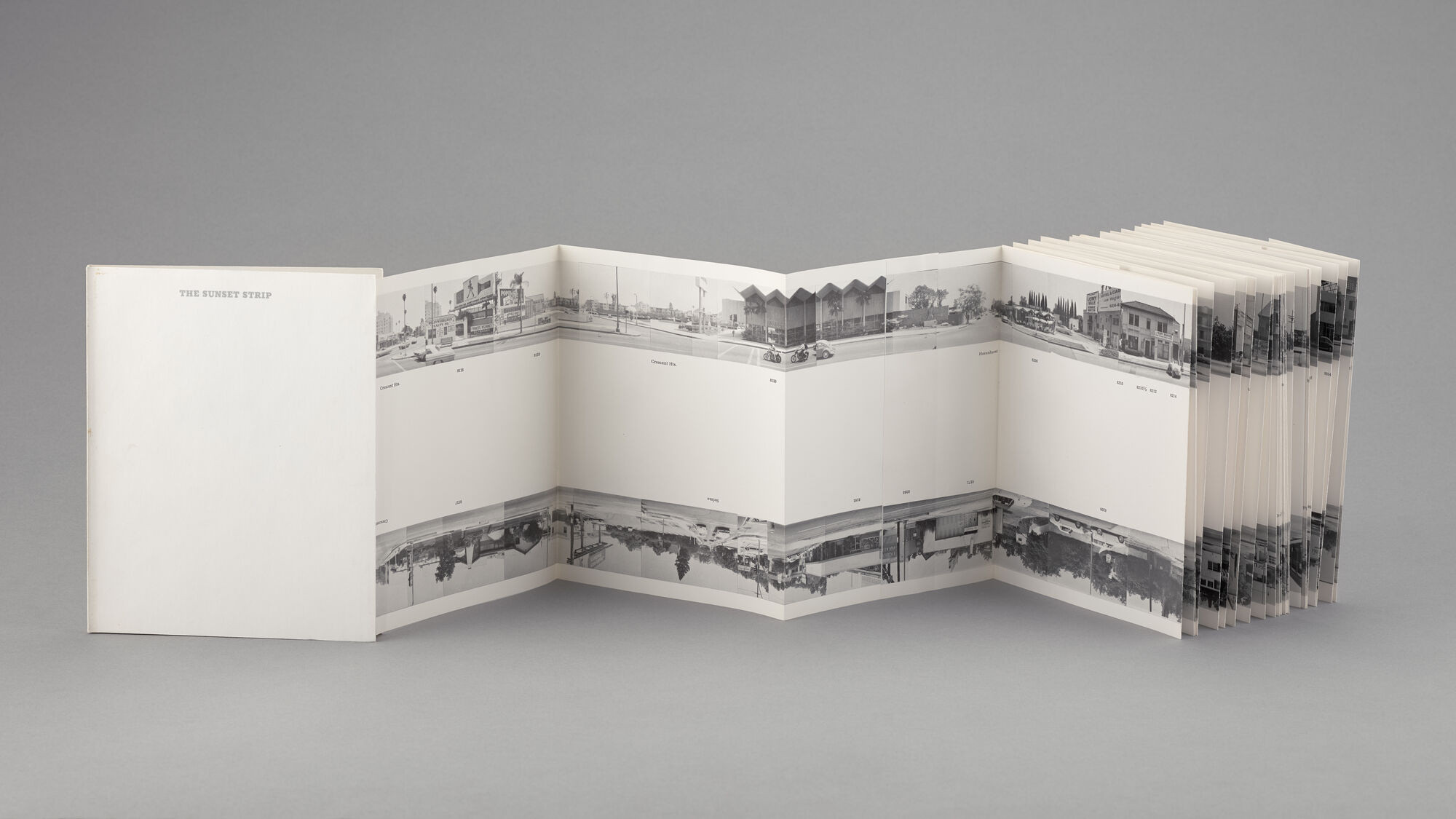
MELROSE
Berlín fue derribado. Why can’t I do the same. Desde la torre de Babel, las
lenguas han sido siempre una forma de divorciarnos del resto de la
humanidad. Poetry must find ways of breaking distance. I’m not reducing
my audience. On the contrary, I’m going to have a bigger audience with the
common markets–in Europe–in America. And besides, all languages are
dialects that are made to break new grounds. I feel like Dante, Petrarca
and Boccaccio, and I even feel like Garcilaso forging a new language.
Saludo al nuevo siglo, el siglo del nuevo lenguaje de América, y le digo
adiós a la retórica separatista y a los atavismos.
Saluda al sol, araña,
no seas rencorosa.
Un beso,
Giannina Braschi
Giannina Braschi (b. 1950). Yo-Yo Boing!, 1998
Jefferson Irving
La Cumbanchita
David Shuldiner Glass & Mirror Contractors
J&C Mini Market
Wick
Nook
Grocery
Laissent parfois sortir de confuses paroles;
l’homme y passe à travers des forêts de symboles
Qui l’observent avec des regards familiers.
Comme de longs échos qui de loin se confondent
Dans une ténébreuse et profonde unité,
Vaste comme la nuit et comme la clarté,
Les parfums, les couleurs et les sons se répondent.
II est des parfums frais comme des chairs d’enfants,
Doux comme les hautbois, verts comme les prairies,
— Et d’autres, corrompus, riches et triomphants,
Ayant l’expansion des choses infinies,
Comme l’ambre, le musc, le benjoin et l’encens,
Qui chantent les transports de l’esprit et des sens.
Sometimes let out confused lyrics
Man passes through, across forests of symbols
Each one observing him with a familiar gaze
Like long echoes, from afar confounding
In a dark and profound unity
Vast like night and like clarity
Fragrance, color, and sound all resounding
Fresh perfumes like the fleshes of children
Tender as oboes, green as prairies,
—And others too, corrupt, rich, and triumphant,
Expansive, like all infinite things
Amber, musk, benzoin, and incense
All singing the transcendence of spirit and sense.
“Correspondances” (Correspondences)
Charles Baudelaire (1821–1867), translated for Delirium: The Art of the Symbolist Book, exhibition at The Morgan Library & Museum, 2017
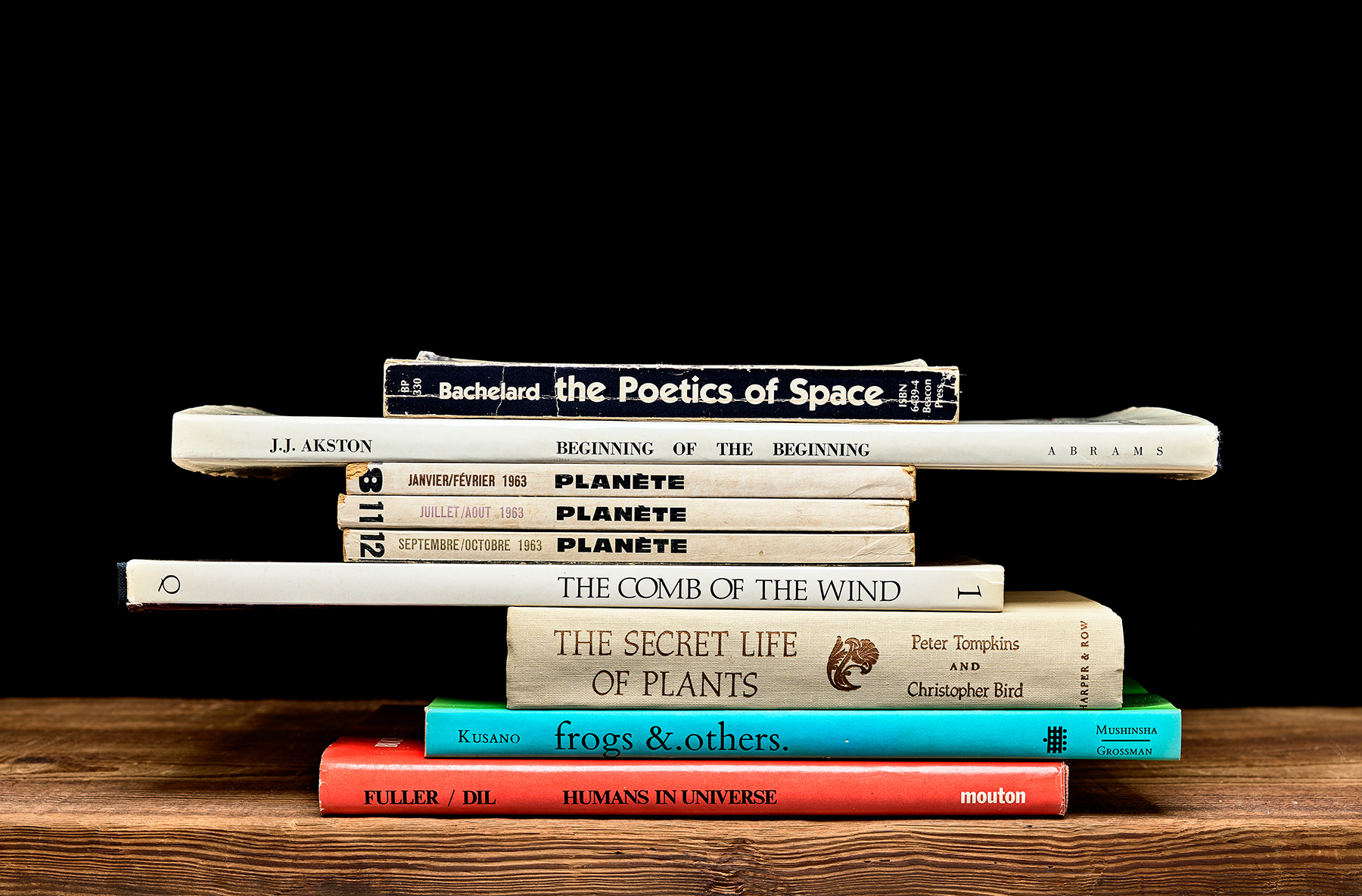
Not every single project follows that directive, but that’s often a question I’m asking myself. It’s also my way of observing the world. It’s this idea of trying to look for things I haven’t noticed before. Sometimes in doing that a seed of an idea may surface. I’m not necessarily walking around going, “What can I make? What’s here? What can I make?,” but my natural tendency is to try to be looking for those things out there.
There’s so much oddness in New York City, in the way things are fixed and repaired and done provisionally and slapdash. As a citizen of the city, it drives me crazy sometimes, that stuff here is often repaired in such a shitty way. On the other hand, it can lead to beautiful and charming situations where you see the logic of its repair, its remaking, and its fixing. I like the way that layers of human activity show themselves. I’ve been living here for 20 years, and this interest has become reinforced by the way the city itself illustrates it.
INC.
&DELI
Jefferson
Troutman Irving
Guacuco
Alex Barbershop
La Michoacana
The Ten Bells Brooklyn
Green Streets
Roland Barthes (1915–1980). “Sémiologie et urbanisme” (Semiology and Urbanism), 1971
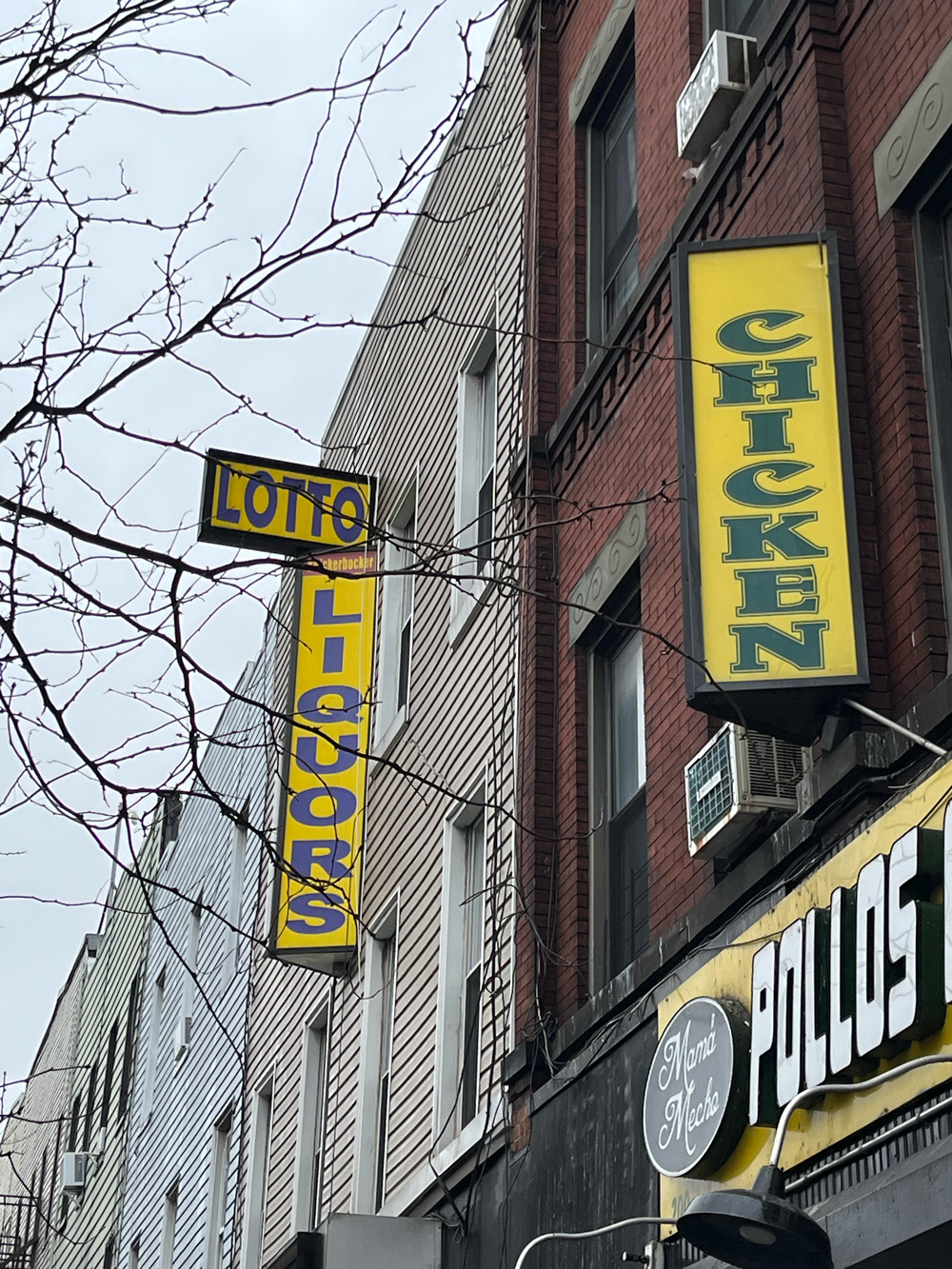
272
Noodles
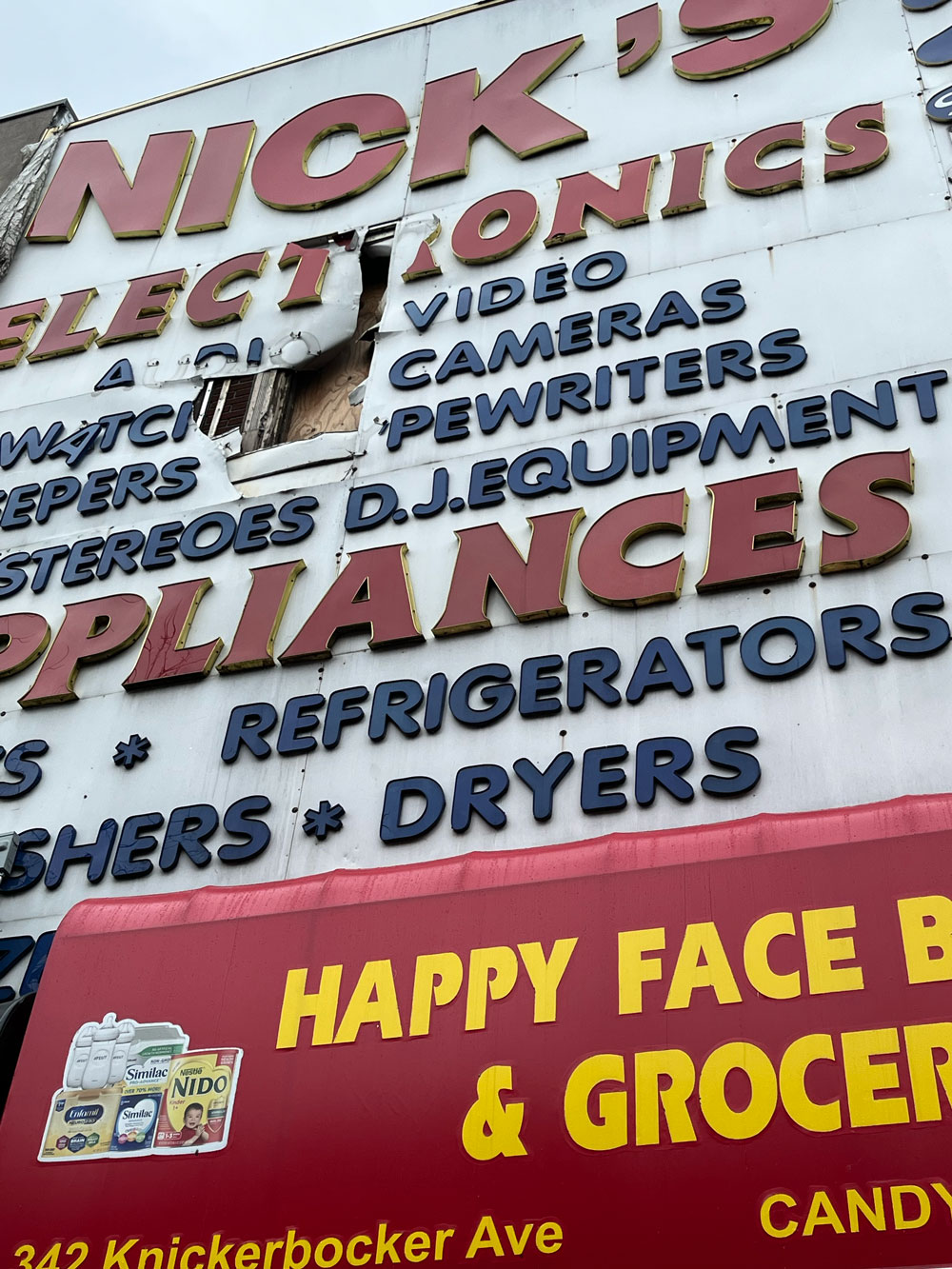
three days after Bastille day, yes
it is 1959 and I go get a shoeshine
because I will get off the 4:19 in Easthampton
at 7:15 and then go straight to dinner
and I don’t know the people who will feed me
I walk up the muggy street beginning to sun
and have a hamburger and a malted and buy
an ugly NEW WORLD WRITING to see what the poets
in Ghana are doing these days
I go on to the bank
and Miss Stillwagon (first name Linda I once heard)
doesn’t even look up my balance for once in her life
and in the GOLDEN GRIFFIN I get a little Verlaine
for Patsy with drawings by Bonnard although I do
think of Hesiod, trans. Richmond Lattimore or
Brendan Behan’s new play or Le Balcon or Les Nègres
of Genet, but I don’t, I stick with Verlaine
after practically going to sleep with quandariness
and for Mike I just stroll into the PARK LANE
Liquor Store and ask for a bottle of Strega and
then I go back where I came from to 6th Avenue
and the tobacconist in the Ziegfeld Theatre and
casually ask for a carton of Gauloises and a carton
of Picayunes, and a NEW YORK POST with her face on it
and I am sweating a lot by now and thinking of
leaning on the john door in the 5 SPOT
while she whispered a song along the keyboard
to Mal Waldron and everyone and I stopped breathing
Frank O’Hara, from Lunch Poems, 1964. © 1964 Frank O’Hara
Starr Irving
Iglesia Cristiana Pentecostes Movimeitno Misionero Mundial (MMM)
Public 123 School
Pour le parfait flâneur, pour l’observateur passionné, c’est une immense jouissance que d’habiter au cœur de la multitude, dans l’ondoyant, dans le mouvement, dans le fugitif et l’infini. Être hors de chez soi, et pourtant se sentir partout chez soi; voir le monde, être au centre du monde, et rester caché au monde,–impartial natures que la langue ne peut que mal définir. Le spectateur est un prince qui jouit partout de son incognito. L’amateur de la vie fait de tout le monde sa famille, comme l’amateur de la beauté des femmes compose sa famille avec toutes les beautés qu’il rencontre.
Les enseignes lumineuses et vernies des boutiques lui plaisent autant qu’une peinture à l’huile plaît à un bourgeois dans son salon. Les murs lui servent de pupitre où il pose ses carnets; les kiosques des bouquinistes sont ses bibliothèques; et les terrasses des cafés sont les balcons d’où il regarde son ménage, après le travail. Sa passion et son métier, c’est de se mêler à la foule. Pour le parfait oisif, pour l’observateur passionné, c’est une fête sans fin, un régal pour l’œil, une source inépuisable de poésie.
For the perfect flâneur, for the passionate spectator, it is an immense joy to set up house in the heart of the multitude, amid the ebb and flow of movement, in the midst of the fugitive and the infinite. To be away from home and yet to feel oneself everywhere at home; to see the world, to be at the center of the world, and yet to remain hidden from the world—such are a few of the slightest pleasures of those independent, passionate, impartial natures which the tongue can but clumsily define. The spectator is a prince who everywhere rejoices in his incognito. The lover of life makes the whole world his family, just like the lover of the fair sex who builds up his own family from all the beauties of the world.
To him the shiny, enameled signs of businesses are at least as good a wall ornament as an oil painting is to a bourgeois in his salon. The walls are the desk against which he presses his notebooks; newsstands are his libraries, and the terraces of cafés are the balconies from which he looks down on his household after his work is done. His passion and his profession is to merge with the crowd. For the perfect idler, for the passionate observer, it becomes an irresistible feast of the eyes and an infinite source of poetry.
Charles Baudelaire (1821–1867). “Le peintre de la vie moderne, III. ‘L'artiste, homme du monde, homme des foules et enfant’” (The Painter of Modern Life, III: “The Artist, Man of the World, Man of the Crowd, and Child”), 1863
Entre les divers procédés situationnistes, la dérive se définit comme une technique du passage hâtif à travers des ambiances variées. Le concept de dérive est indissolublement lié à la reconnaissance d’effets de nature psychogéographique, et à l’affirmation d’un comportemennt ludique-constructif, ce qui l’oppose en tous points aux notions classiques de voyage et de promenade.
Une ou plusieurs personnes se livrant à la dérive renoncent, pour une durée plus ou moins longue, aux raisons de se déplacer et d’agir qu’elles se connaissent généralement, aux relations, aux travaux et aux loisirs qui leur sont propres, pour se laisser aller aux sollicitations du terrain et des rencontres qui y correspondent.La part de l’aléatoire est ici moins déterminante qu’on ne croit : du point de vue de la dérive, il existe un relief psychogéographique des villes, avec des courants constants, des points fixes, et des tourbillons qui rendent l’accès ou la sortie de certaines zones fort malaisés.
One of the basic situationist practices is the dérive [literally: “drifting”], a technique of rapid passage through varied ambiances. Dérives involve playful-constructive behavior and awareness of psychogeographical effects, and are thus quite different from the classic notions of journey or stroll.
In a dérive one or more persons during a certain period drop their relations, their work and leisure activities, and all their other usual motives for movement and action, and let themselves be drawn by the attractions of the terrain and the encounters they find there. Chance is a less important factor in this activity than one might think: from a dérive point of view cities have psychogeographical contours, with constant currents, fixed points and vortexes that strongly discourage entry into or exit from certain zones.
Guy Debord (1931–1994), “Théorie de la dérive” (Theory of the Dérive), 1958
Walter Benjamin (1892–1940). Berliner Kindheit um 1900 (Berlin Childhood around 1900), 1932–1938/2006
Suydam Irving
Ridgewood Heights Medical & Dental Center
Raccoon Thrift
West Lab + Gallery
China Garden Delicious Chinese Food Take Out
Mexican Grill
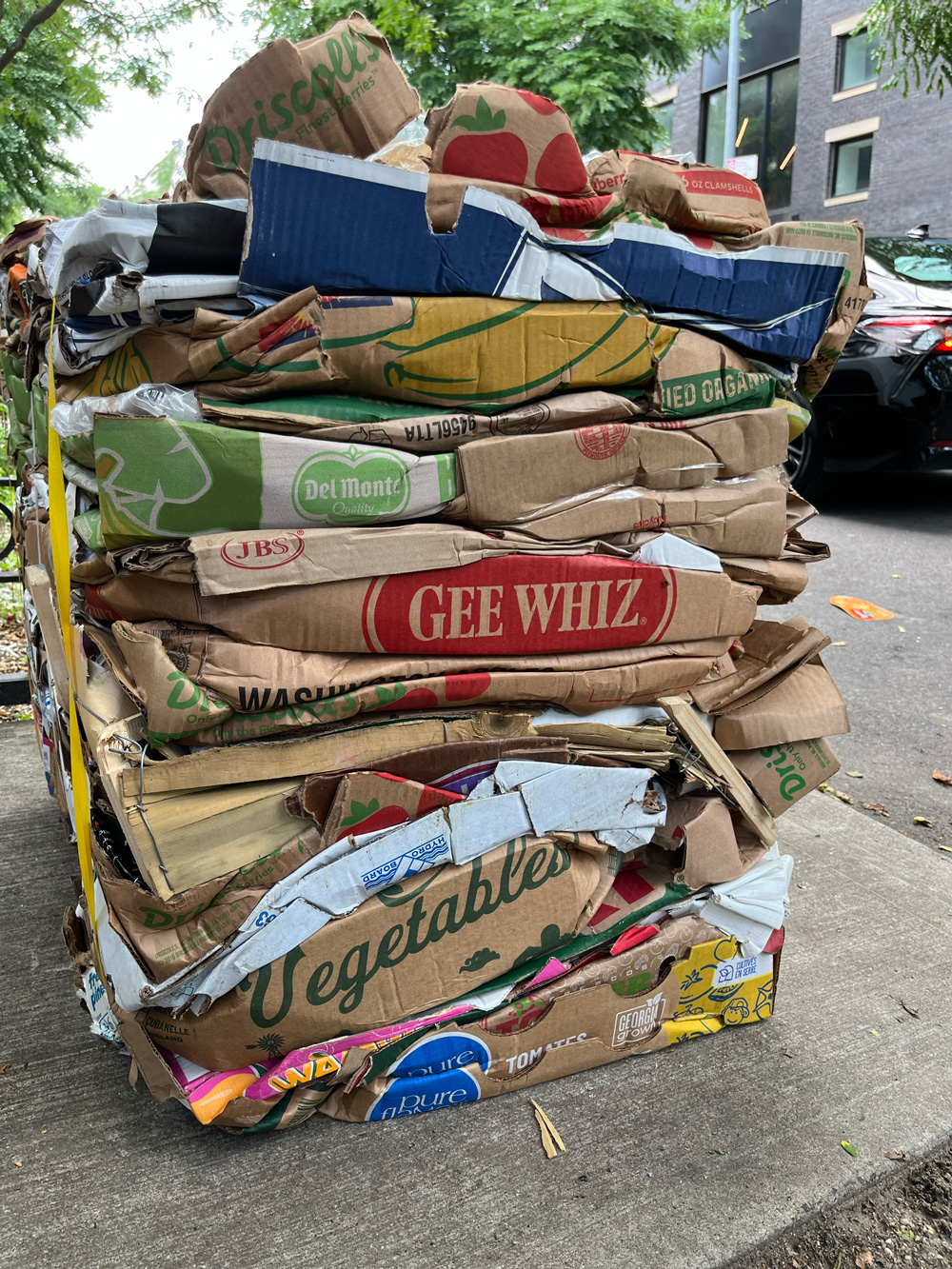
in new york city
was born in Puerto Rico
his name is Jorge Brandon (1902-1995)
he is over 70 years old
he carries his metaphor
in brown shopping bags
inside steel shopping cart
he travels around with
on the streets of manhattan
he recites his poetry
to whoever listens
& when nobody is around
he recites to himself
he speaks the wisdom
of unforgettable palm trees
the vocabulary of coconuts
that wear overcoats
the traffic lights
of his poems function
without boring advice
from ac or dc current
book stores & libraries
are deprived of his vibes
to become familiar
with this immortal poet
you have to hang-out
on street corners
building stoops rooftops
fire escapes bars parks
subway train stations
bodegas botanicas
iglesias pawn shops
card games cock fights
funerals valencia bakery
hunts point palace
pool halls orchard beach
& cuchifrito stands
on the lower eastside
the admission is free
his presence is poetry
Pedro Pietri (1944–2004). Selected Poetry. © 2015 Pedro Pietri
Hart Irving
Smoke World
Long Nails
139 Laundromat
Lupita’s Beauty Palace Corp.
J’s Barber Shop
Georges Perec (1936–1982), Espèces d‘espaces, (Species of Spaces and Other Pieces), 1974/1998
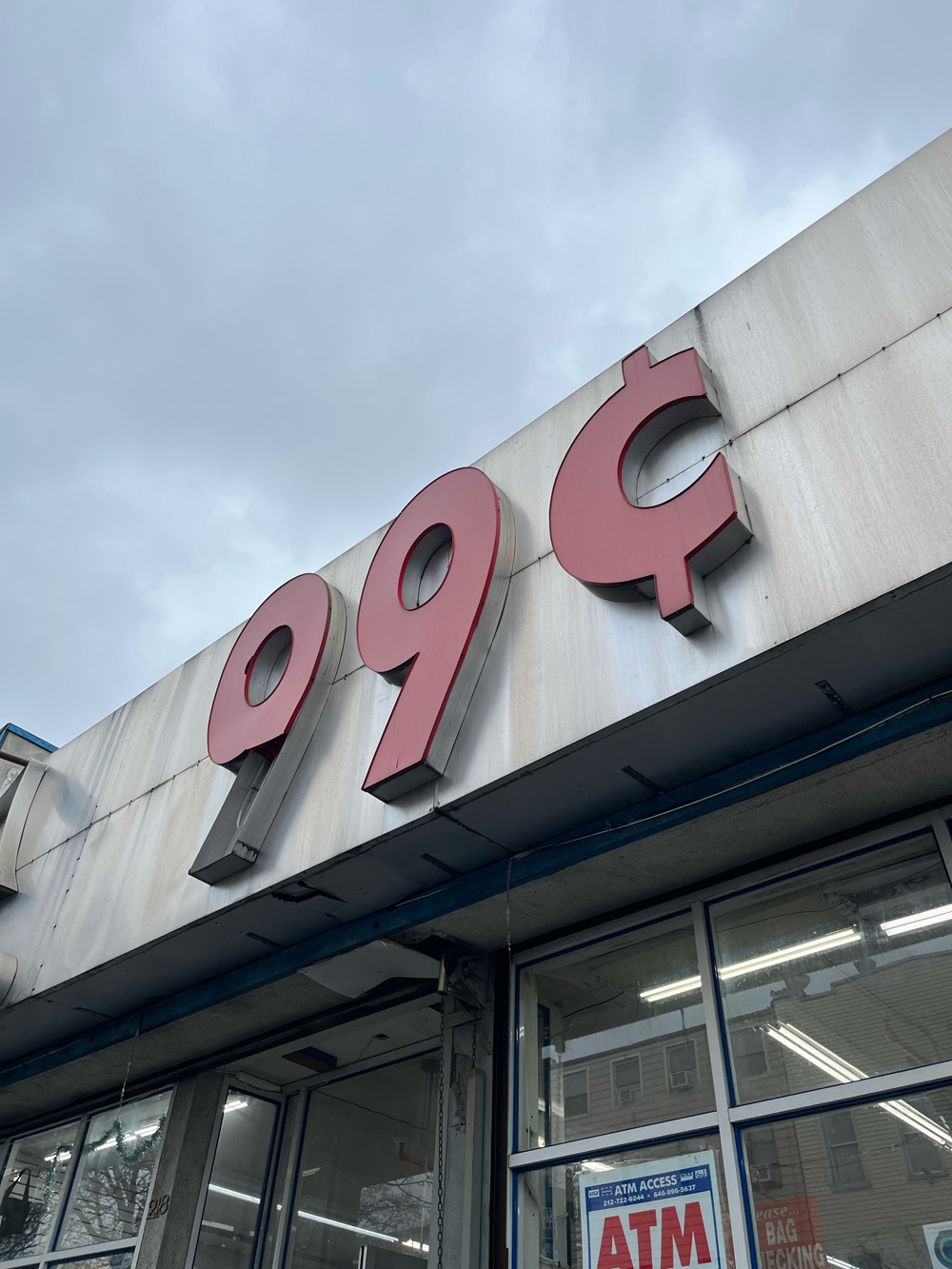
There are many things in place Saint-Sulpice; for instance: a district council building, a financial building, a police station, three cafés, one of which sells tobacco and stamps, a movie theater, a church on which Le Vau, Gittard, Oppenord, Servandoni and Chalgrin have all worked, and which is dedicated to a chaplain of Clotaire II, who was bishop of Bourges from 624 to 644 and whom we celebrate on 17 January, a publisher, a funeral parlor, a travel agency, a bus stop, a tailor, a hotel, a fountain decorated with the statues of four great Christian orators (Bossuet, Fénelon, Fléchier, and Massillon), a newsstand, a seller of pious objects, a parking lot, a beauty parlor, and many other things as well.
A great number, if not the majority, of these things have been described, inventoried, photographed, talked about, or registered. My intention in the pages that follow was to describe the rest instead: that which is generally not taken note of, that which is not noticed, that which has no importance: what happens when nothing happens other than the weather, people, cars, and clouds.
Date: 18 October 1974
Time: 10:30 AM
Location: Tabac Saint-Sulpice
Weather: Dry Cold, Gray Sky, Some Sunny Spells
Outline of an inventory of some strictly visible things:
—Letters of the alphabet, words: “KLM” (on the breast pocket of someone walking by), an uppercase “P” which stands for “parking”; “Hôtel Récamier,” “St-Raphaël,” “l’épargne à la dérive [Savings adrift],” “Taxis tête de station [Taxi stand],” “Rue du Vieux-Colombier,” “Brasserie-bar La Fontaine Saint-Sulpice,” “P ELF,” “Parc Saint-Sulpice.”
—conventional symbols: arrows, under the “P” of the parking lot signs, one of them pointing slightly toward the ground, the other in the direction of rue Bonaparte (Luxembourg side), at least four one-way signs (a fifth one reflected in one of the caf´é mirrors).
—Numbers: 86 (on the front of a bus on the 86 line, above which it says its destination: Saint-Germain-des-Prés), 1 (plaque of no.1 on rue du Vieux-Colombier, 6 (on the square, indicating that we are in teh sixth arrondissement of Paris).
—Fleeting slogans: “De l’autobus, je regarde Paris [From the bus, I look at Paris]”
—Ground: packed gravel and sand
—Stone: the curbs, a fountain, a church, buildings...
—Asphalt
—Trees (leafy, many yellowing
—A rather big chunk of sky (maybe one-sixth of my field of visions)
—A cloud of pigeons that suddenly swoops down on the central plaza, betwen the church and foundtain
—Vehicles (their inventory remains to be made
—Human beings
—Some sort of basset hound
—Bread (baguette)
—Lettuce (curly endive?) partially emerging from a shopping bag
Dekalb Irving
Irving Bottle
Ollie’s Ice Cream + Stuff
Centro Miosnero Siloé
Sapore Di Italia Restaurant
Caraotas
H&R Block
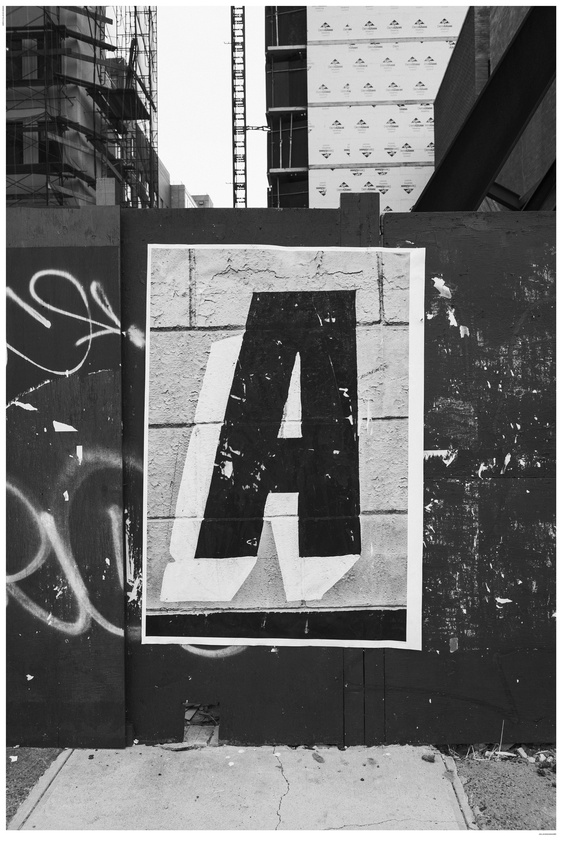
Zoe Leonard
Dear Reader is amazing in that it really happens in two temporalities. The text is so fast, but the shadows and reflections on the surface of the sign change slowly, almost elliptically. This is exactly the kind of disjunction we are asked to navigate on a daily basis as we move around our cities.
Do you ever think of yourself as a poet or writer? Does that identity matter to you?
Shannon Ebner
The work itself functions as a form of writing for me, except that it can take me a disproportionate amount of time to complete a project. It started to get really absurd with The Electric Comma project: it took three years to make an artwork from a thirteen-line poem. It took me that long to find the right form for the language. Often I am asked about my relationship to the Concrete poets because of the role that form plays in my work vis-à-vis the imagery. I am always trying to shift that dialogue a bit; there’s a distinction to be made between Concretism and its history, and something that’s actually about self-reflexivity. I am more interested in a conversation about form as a manifestation of self-reflexive thinking. I am not sure how to reconcile that with poetry, even though I am consistently engaged with words, their visual appearance, and what they mean or don’t mean. This often finds me reading about poetry more so than poetry itself. I do think about the question of identity—I’ve had to, since the question does come up. I have been reluctant to identify as a poet and I am not sure what that is about. Maybe I’ve always felt like an outlier. This question of identity does matter to me, even though I am unresolved about it.
Dekalb
Tôi ngồi chế tạo ra thơ ca
chỉ bằng mười sáu con ốc, hai tấm kim loại,
bốn bánh xe. Nó được đổ đầy nhiên liệu
hỗn hợp của xung đột, hy vọng, tình yêu và sự vô ích.
Đủ sức chạy từ Mỹ sang Tàu trong một đường hầm
tối om xuyên tâm trái đất.
Đường hầm mà trước đó không lâu
số phận đã đục trong một cơn cương cứng.
I sit manufacturing poems
out of sixteen screws, two metal plates,
and four wheels. Poems fueled
by a mix of strife, hope, love, and futility.
Enough to run from America to China
in a pitch-black tunnel bisecting the Earth’s core.
Blasting open through fate
I tunnel deep.
« Chế Tạo Thơ Ca » (Manufacturing Poetry)
Phan Nhiên Hạo (b. 1967). Translated by Hai-Dang Phan. 2011. © 2011 Phan Nhiên Hạo
FARMACIA
Inc.
DEKALB
DEKALB
Hair Salon
Stockholm Irving
Santa Ana Deli
Zandra Unisex Salon Corp.
D Johnny Dry Cleaners
Queen of Swords
Elizabeths Beauty Salon
Bushwick Bark
Werkshop
Laundromat
linien zusammen sind eine fläche.
flächen zusammen sind ein körper.
körper im raum sind eine konstellation.
lines together form a surface.
surfaces together form a body.
Bodies in space are a constellation.
„Linie zu Konstellation“ (Line to Constellation)
Eugen Gomringer (1925–2021), 1954
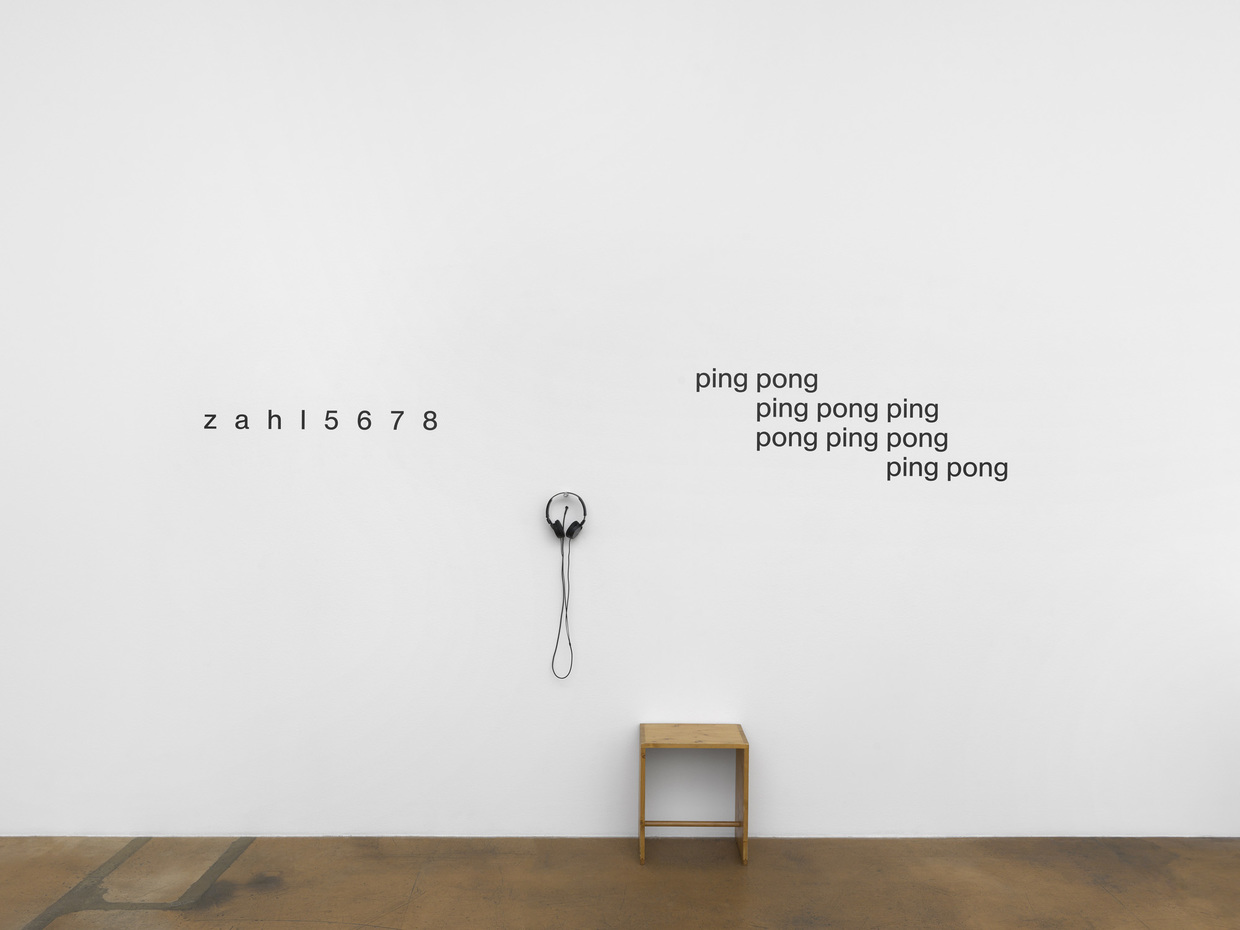
Die Konstellation ist die einfachste mögliche Form der Konfiguration in der Poesie, deren Grundeinheit das Wort ist. Sie schließt eine Gruppe von Wörtern ein, als ob sie Sterne zusammenzieht, um ein Cluster zu bilden.
Die Konstellation ist eine Anordnung und zugleich ein Spielfeld von festen Dimensionen.
Die Konstellation wird vom Dichter geordnet. Er bestimmt das Spielfeld, das Feld oder die Kraft und deutet seine Möglichkeiten an. Der Leser, der neue Leser, erfasst die Idee des Spiels und steigt ein.
In der Konstellation wird etwas in die Welt gebracht. Sie ist eine Realität für sich und kein Gedicht über etwas. Die Konstellation ist eine Einladung.
The constellation is the simplest possible kind of configuration in poetry which has for its basic unit the word, it encloses a group of words as if it were drawing stars together to form a cluster.
The constellation is an arrangement, and at the same time a play-area of fixed dimensions.
The constellation is ordered by the poet. He determines the play-area, the field or force and suggests its possibilities. the reader, the new reader, grasps the idea of play, and joins in.
In the constellation something is brought into the world. It is a reality in itself and not a poem about something or other. The constellation is an invitation.
Eugen Gomringer (1925–2021). „Von Linie zu Konstellation” (From Line to Constellation), 1954
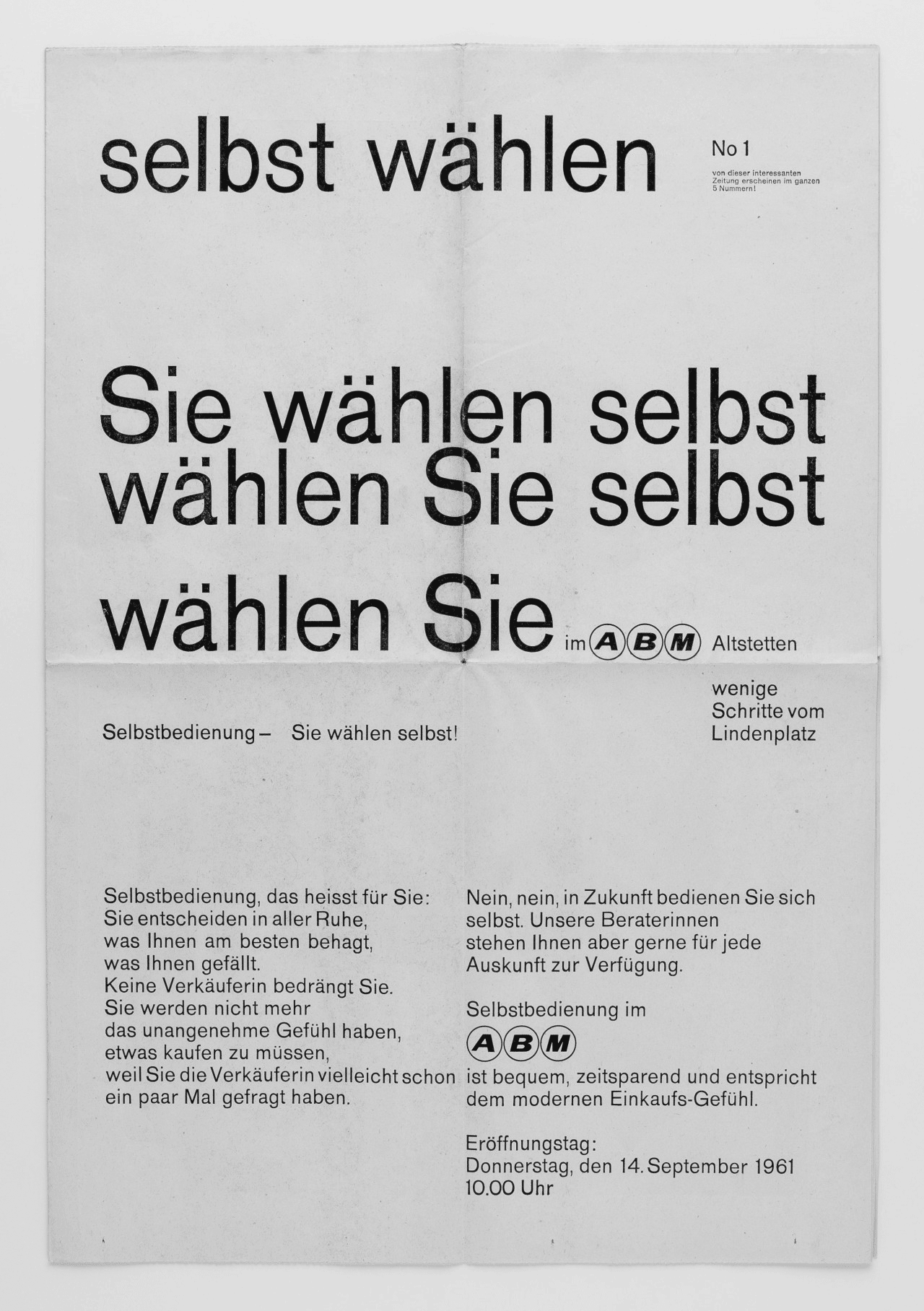
Wählen Sie Selbst
Wählen Sie
Choose Self
Choose
Translated advertisement copy from „Wählen Sie Selbst“, 1961. Graphic design by E+U Hiestand, text by Eugen Gomringer
Stanhope Irving
Santa Ana restaurante y taqueria
Sol de Quito
J&C Custom Upholstery Corp. & Reupholstery
Brooklyn Vintage
La Ziza Deli & Grill
A&O Grocery Corp.
FOODS
MINI
MARKET
Waters
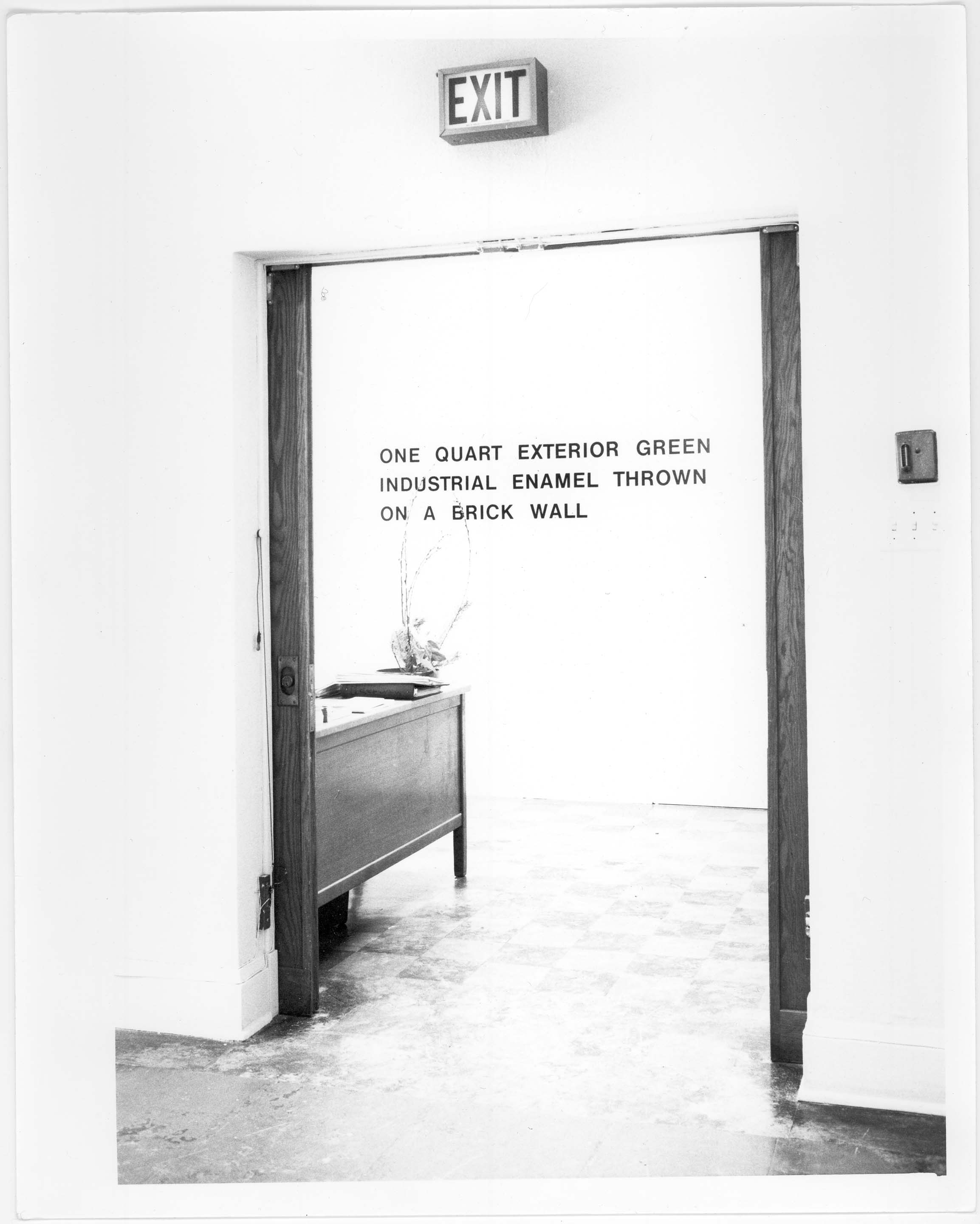
AND THE MATERIAL
REFERRED TO
Farmacia
Santa Fe
Cookhouse
News Stand
Himrod Irving
Geovanny’s AUTO ACCESSORIES CORP.
Botanica El Milagroso San Lazaro
ECUA-Nube’s Beauty Salon & Barber Shop
Octopus Records
Jilguero Multi Services Corp.
Finn Vintage
Bushwick Orthodontic Studio
Stephanie’s Unisex
The walks met a need: they were a release from the tightly regulated mental environment of work, and once I discovered them as therapy, they became the normal thing, and I forgot what life had been like before I started walking. Work was a regimen of perfection and competence, and it neither alowed improvisation nor tolerated mistakes. As interesting as my research project was—I was conducting a clinical study of a fective disorders in the elderly—the level of detail it demandeda fective disorders in the elderly—the level of detail it demanded was of an intricacy that exceeded anything else I had done thus far. The streets served as a welcome opposite to al that. Every decision—where to turn left, how long to remain lost in thought in front of an abandoned building, whether to watch the sun set over New Jersey, or to lope in the shadows on the East Side looking across to Queens—was inconsequential, and was for that reason a reminder of freedom. I covered the city blocks as though measuring them with my stride, and the subway stations served as recurring motives in my aimless progress. The sight of large masses of people hurrying down into underground chambers was perpetualy strange to me, and I felt that al of the human race were rushing, pushed by a counterinstinctive death drive, into movable catacombs. Above-ground I was with thousands of others in their solitude, but in the subway, standing close to strangers, jostling them and being jostled by them for space and breathing room, al of us reenacting unacknowledged traumas, the solitude intensified.
Withdrawn, I join a group of children watching—I pause aside with them.
By the curb, toward the edge of the flagging,
A knife-grinder works at his wheel, sharpening a great knife;
Bending over, he carefully holds it to the stone—by foot and knee,
With measur’d tread, he turns rapidly—As he presses with light but firm hand,
Forth issue, then, in copious golden jets,
Sparkles from the wheel.
The scene, and all its belongings—how they seize and affect me!
The sad, sharp-chinn’d old man, with worn clothes, and broad shoulder-band of leather;
Myself, effusing and fluid—a phantom curiously floating—now here absorb’d and arrested;
The group, (an unminded point, set in a vast surrounding;)
The attentive, quiet children—the loud, proud, restive base of the streets;
The low, hoarse purr of the whirling stone—the light-press’d blade,
Diffusing, dropping, sideways-darting, in tiny showers of gold,
Sparkles from the wheel.
Walt Whitman (1819–1892)
Himrod
of Manhattan Island
Where once the Iroquois
canoed in style—
A clear liquid
caressing another name
for rock,
Now the jumping
Stretch of Avenue D
housing projects
Where Ricans and Afros
Johnny Pacheco / Wilson Pickett
The portable radio night—
Across the Domino sugar
Neon lights of the Brooklyn shore
Window carnival of
megalopolis lights
From Houston Street
Twenty kids take off
On summer bikes
Across the Williamsburg
Bridge
Their hair flying
With bodega bean protein
Below the working class
jumping like frogs—
Parrots with new raincoats
swinging canes of bamboo
Like third legs
Down diddy-bop 6th Street
of the roaring Dragons
Strollers of cool flow
When winter comes they fly
In capes down Delancey
Past the bites of pastrami
Sandwiches in Katz’s
Marching through red bricks
aglow dragging hind leg
Swinging arms
Defying in simalcas
Victor Hernández Cruz (b. 1948)
Harman Irving
Mi Pequeño Restaurant
P.S. 086 The Irvington
NO PARKING ANYTIME 24/7
Valerie Grocery
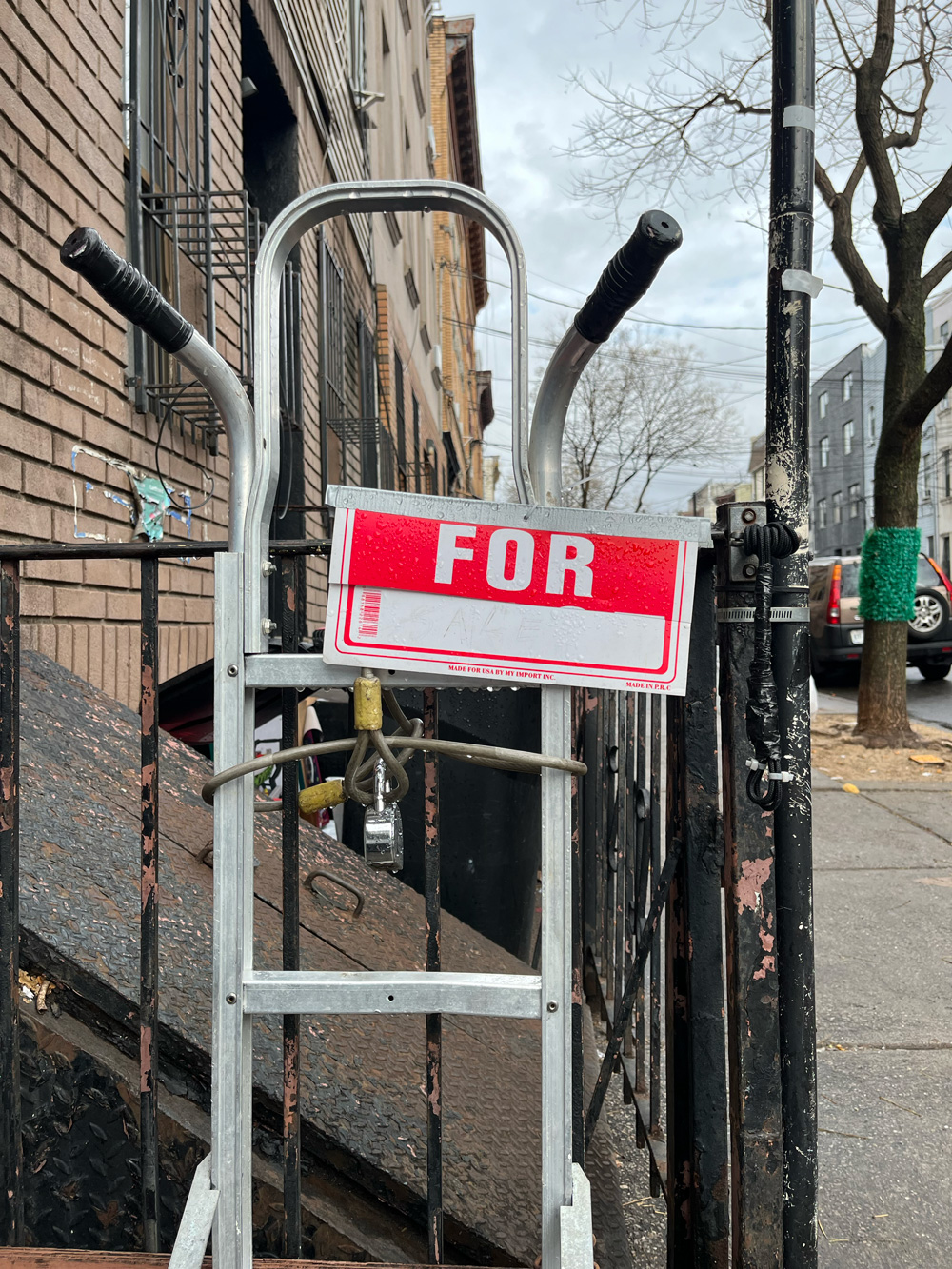
Grocery
“Poetry of the Night”
Giannina Braschi (b. 1950)
Finalmente giungi alla città di Tamara. Ti inoltri lungo vie fitte d’insegne che sporgono dai muri. L’occhio non vede cose ma figure di cose che significano altre cose: la tenaglia indica la casa del dentista, la brocca la taverna, le alabarde la caserma, la bilancia il fruttivendolo. Statue e scudi raffigurano leoni delfini torri stelle: segno che qualcosa—chissà che cosa—ha per segno un leone o un delfino o una torre o una stella. Altri segnali avvertono di ciò che in quel luogo è vietato (entrare con i carri nel vicolo, orinare dietro il chiosco, pescare con la canna dal ponte) e di ciò che è permesso (abbeverare le zebre, giocare a bocce, bruciare le salme dei parenti). Dalle porte dei templi si vedono le statue degli dei, ognuna col suo attributo—la cornucopia, la clessidra, la medusa—perché il fedele li riconosca e rivolga loro le preghiere giuste. Se un edificio non ha insegna né figura, la sua forma stessa e il posto che occupa nell’ordine della città bastano a indicarne la funzione: il palazzo, la prigione, la zecca, la scuola pitagorica, il casino. Anche le mercanzie che i venditori espongono sulle bancarelle non sono apprezzate in sé ma come segni d’altre cose: il diadema ricamato significa eleganza; la portantina dorata, potere; i volumi di Averroè, sapienza; il braccialetto alla caviglia, voluttà.
Il tuo sguardo percorre le vie come pagine scritte: la città dice tutto quello che devi pensare, ti fa ripetere il suo discorso, e mentre credi di visitare Tamara non fai che registrare i nomi con cui essa si definisce e tutte le sue parti.
Qualunque sia la città al di sotto di questa coltre fitta di segni, qualunque sia la cosa che essa contiene o nasconde, tu lasci Tamara senza averla scoperta. Fuori si estende la terra deserta fino all’orizzonte, si apre il cielo col passaggio di nubi veloci. Nella forma che il caso e il vento danno alle nuvole, già sei intento a riconoscere figure: una vela, una mano, un elefante..
Finally the journey leads to the city of Tamara. You penetrate it along streets thick with signboards jutting from the walls. The eye does not see things but images of things that mean other things: pincers point out the tooth-drawer's house; a tankard, the tavern; halberds, the barracks; scales, the grocer's. Statues and shields depict lions, dolphins, towers, stars: a sign that something-who knows what?- has as its sign a lion or a dolphin or a tower or a star. Other signals warn of what is forbidden in a given place (to enter the alley with wagons, to urinate behind the kiosk, to fish with your pole from the bridge) and what is allowed (watering zebras, playing bowls, burning relatives’ corpses). From the doors of the temples the gods’ statues are seen, each portrayed with his attributes-the cornucopia, the hourglass, the medusa-so that the worshiper can recognize them and address his prayers correctly. If a building has no signboard or figure, its very form 13 and the position it occupies in the city's order suffice to indicate its function: the palace, the prison, the mint, the Pythagorean school, the brothel. The wares, too, which the vendors display on their stalls are valuable not in themselves but as signs of other things: the embroidered headband stands for elegance; the gilded palanquin, power; the volumes of Averroes, learning; the ankle bracelet, voluptuousness. Your gaze scans the streets as if they were written pages: the city says everything you must think, makes you repeat her discourse, and while you believe you are visiting Tamara you are only recording the names with which she defines herself and all her parts.
However the city may really be, beneath this thick coating of signs, whatever it may contain or conceal, you leave Tamara without having discovered it. Outside, the land stretches, empty, to the horizon; the sky opens, with speeding clouds. In the shape that chance and wind give the clouds, you are already intent on recognizing figures: a sailing ship, a hand, an elephant...
Italo Calvino (1923–1985). Le città invisibili (Invisible Cities), 1972/1978
Greene Irving
Valerie Grocery
Bushwick Finest Barber Shop
Irving Convenience
Leslie Beauty Salon
Quick Clean Laundromat
MELROSEGREEN.ONLINE is a compendium about the city as language. Included is a collection of poems, artworks, images, and excerpts that explore the poetic experience of language and the city. Alongside these references are addresses and language taken directly from the street.
The site visualizes the city as a text to be explored and layers these two collections together across the grid of streets between the homes of Gabriel Melcher and Marie Otsuka in Bushwick, Brooklyn, New York City.
Corp.
Cited Works:
POEMS
Braschi, Giannina (b. 1950). “Saluda al sol, araña” (Say Hello to the Sun, Spider). Yo-Yo Boing!, Latin American Literary Review Press, 1998.
Cruz, Victor Hernández (b. 1948). “The Lower East Side of Manhattan.” Maraca: New and Selected Poems 1965–2000, Coffee House Press, 2001. © 2001 Victor Hernández Cruz.
Gomringer, Eugen (1925–2021). „Linie zu Konstellation” (Line to Constellation), 1954.
Hạo, Phan Nhiên (b. 1967). « Chế Tạo Thơ Ca » (Manufacturing Poetry), translated by Hai-Dang Phan. 2011. © 2011 Phan Nhiên Hạo.
O’Hara, Frank (1926–1966). “The Day Lady Died.” Lunch Poems, 1964. © 1964 Frank O'Hara.
Pietri, Pedro (1944–2004). “Traffic Misdirector.” Selected Poetry, 2015. © 2015 Pedro Pietri.
Whitman, Walt (1819–1892). “Sparkles from the Wheel,” 1871.
Braschi, Giannina (b. 1950). “Poetry of the Night.” El libro de payasos y bufones (The Book of Clowns and Buffoons), Grafica Uno 1987; El imperio de los sueños (The Empire of Dreams), translated by Tess O'Dwyer, 1994, Yale University Press, 1994.
TEXTS
Barthes, Roland (1915–1980). “Sémiologie et urbanisme” (Semiology and Urbanism). The City and The Sign: An Introduction to Urban Semiotics, originally written in 1971. Edited by M. Gottdiener and Alexandras Ph. Lagopoulos. Columbia University Press New York, 1986.
Benjamin, Walter (1892–1940). Berliner Kindheit um 1900 (Berlin Childhood around 1900), originally written 1932–1938, translated by Howard Eiland, Belknap Press of Harvard University Press, 2006. © 2006 by the President and Fellows of Harvard College.
Blazwick, Iwona. “Century City.” Century City: Art and Culture in the Modern Metropolis, Tate Publishing Ltd, 2001, pp. 8-15 (p. 8).
Debord, Guy (1931–1994). “Théorie de la dérive” (Theory of the Dérive). Internationale Situationniste #2, 1958.
De Certeau, Michel (1935–1986). The Practice of Everyday Life, translated by Stephen Rendall, University of California Press, 1984.
Ebner, Shannon (b. 1965), and Zoe Leonard (b. 1961). BOMB Magazine, Spring 2014.
Perec, Georges (1936–1982). Espèces d'espaces (Species of Spaces and Other Pieces), originally published in 1974, translated by John Sturrock, Penguin, 1998.
Perec, Georges (1936–1982). Tentative d'épuisement d'un lieu parisien (An Attempt at Exhausting a Place in Paris), originally published 1975, translated by Marc Lowenthal, Wakefield Press, 2010.
Ruscha, Ed (b. 1937), interview with John Coplans, Artforum, February 1965.
Solnit, Rebecca (b. 1961). Wanderlust: A History of Walking. Viking, 2000.
Solnit, Rebecca (b. 1961). A Field Guide to Getting Lost. Viking, 2005.
Waxman, Lori (b. 1976). Keep Walking Intently: The Ambulatory Art of the Surrealists, the Situationist International, and Fluxus, pp. 67-68. Sternberg Press, 2017.
Cole, Teju (b. 1968). Open City. Random House, 2012. © 2011 Teju Cole.
Calvino, Italo (1923–1985). Le città invisibili (Invisible Cities), originally written in 1972, translated by William Weaver. New York : Harcourt Brace Jovanovich, 1978.
Katchadourian, Nina (b. 1968). “Sorted Books,” as described by the artist. ninakatchadourian.com.
Katchadourian, Nina (b. 1968) in conversation with Brandon Stosuy. “Nina Katchadourian on working with what you’re already noticing.” The Creative Independent, June 2017.
Gomringer, Eugen (1925–2021). „Von Linie zu Konstellation” (From Line to Constellation), 1954. Concrete Poetry: A World View, edited by Mary Ellen Solt, Indiana University Press, 1968.
ARTWORKS
Shannon Ebner (b. 1971) and David Reinfurt (b. 1971). A Hudson Yard: August, 2014, 2014–2015.
Nina Katchadourian (b. 1968), The Poetics of Space, from the series Noguchi, 2021 (“Sorted Books” project, 1993 and ongoing).
E+U Hiestand & Eugen Gomringer, „Wählen Sie Selbst“, 1961.
Lawrence Weiner (b. 1942). ONE QUART EXTERIOR GREEN INDUSTRIAL ENAMEL THROWN ON A BRICK WALL, 1968. Installation view, 1978.
All efforts have been made to properly cite source material and note copyright holders.
HAIR & NAILS
Greene
Concept & Design: Gabriel Melcher in collaboration with Marie Otsuka
Website Development: Marie Otsuka
Typeface: Carp. Carp is Marie Otsuka’s functional take on the humanist sans-serif genre inspired by Excoffon’s Antique Olive, where the tops are heavier than the bottom parts of the letter. In Carp, this asymmetric weight balance is exaggerated in the heavier styles, while the lighter styles lean toward a more functional monolinear sans. Complete with a variable width axis, the result is a versatile family suitable for both expressive display and robust body text. You can read more about the typeface and the origins of the design.
Carp is released on Occupant Fonts and distributed through Type Network.